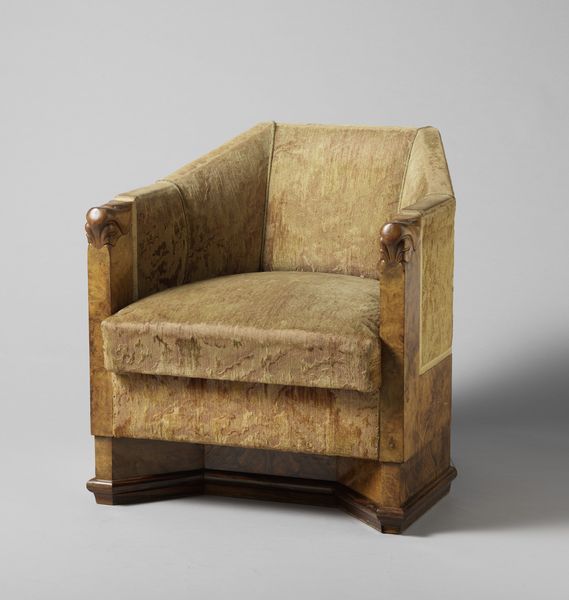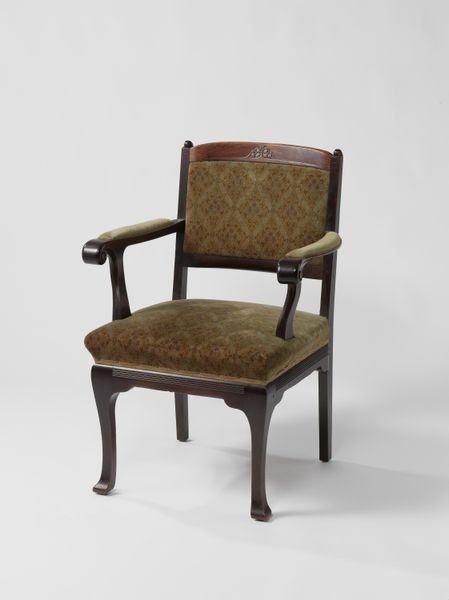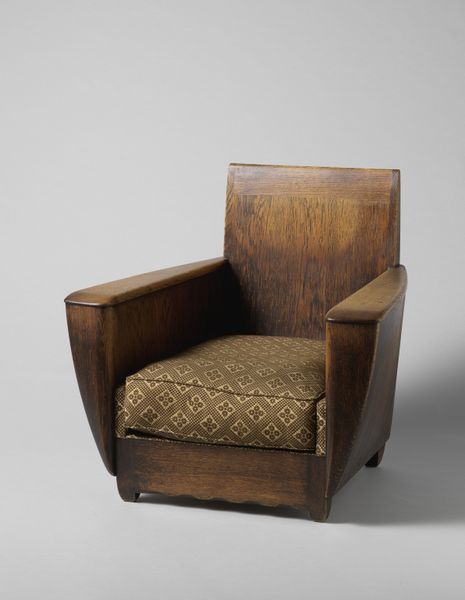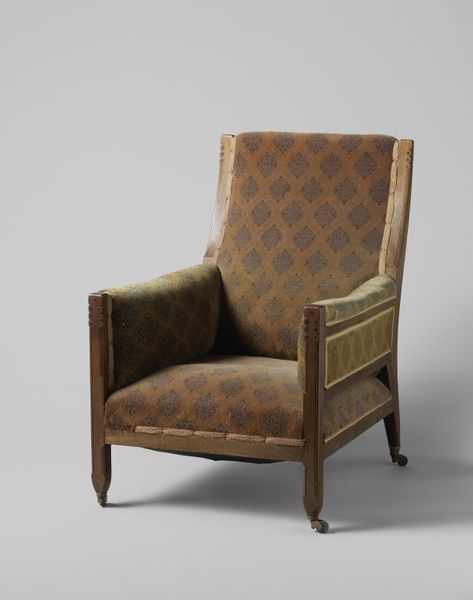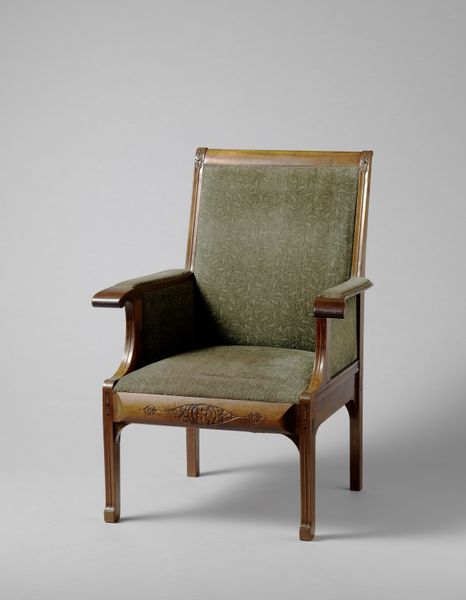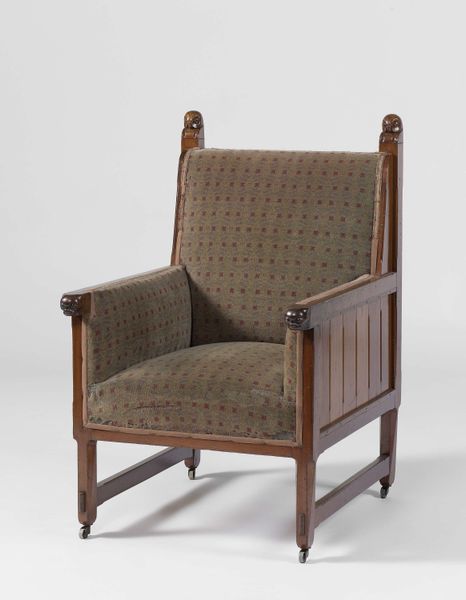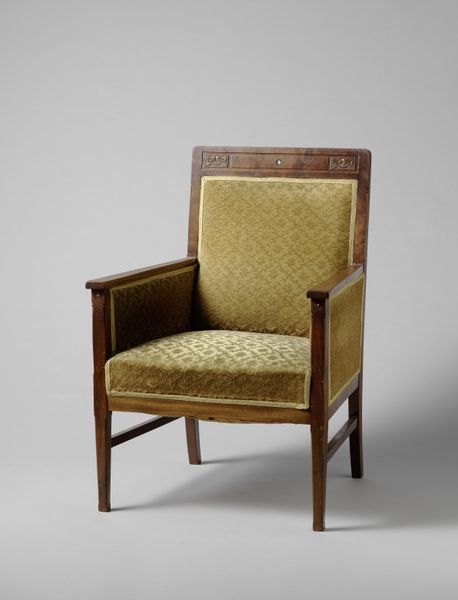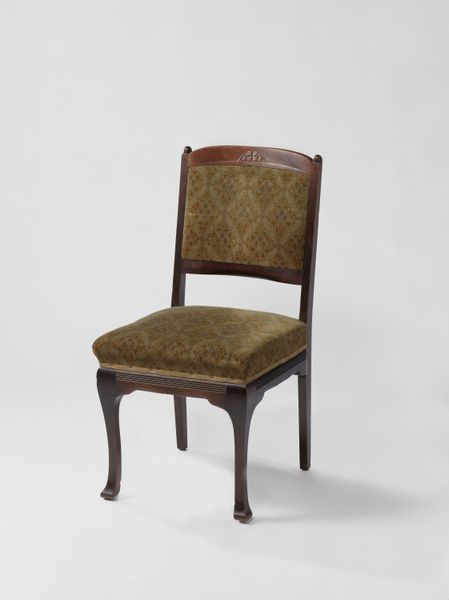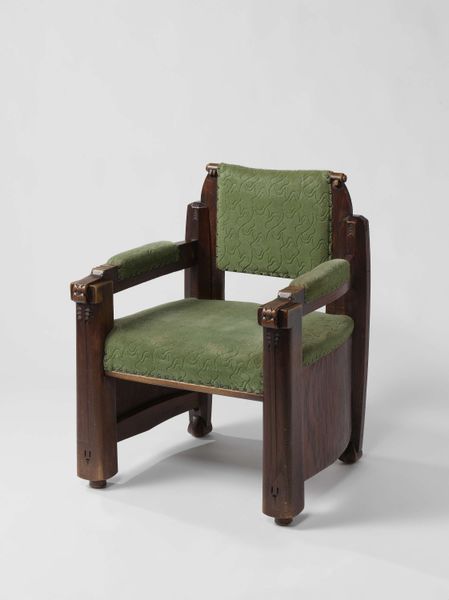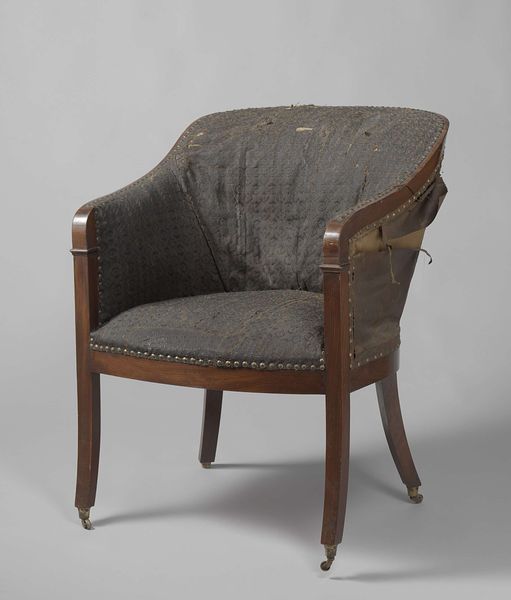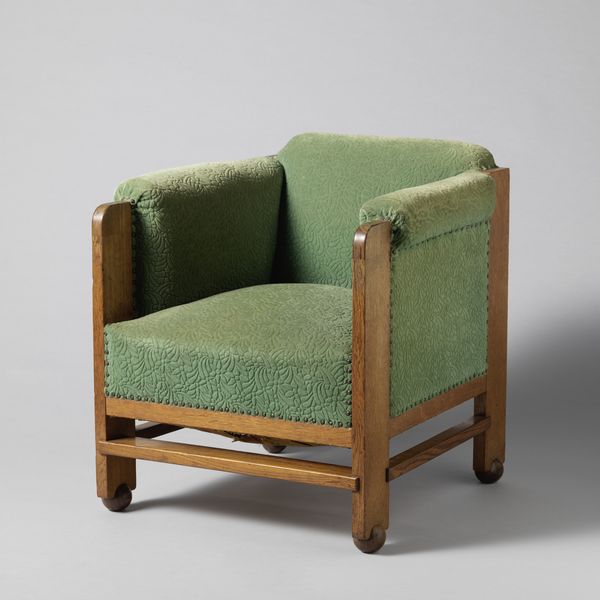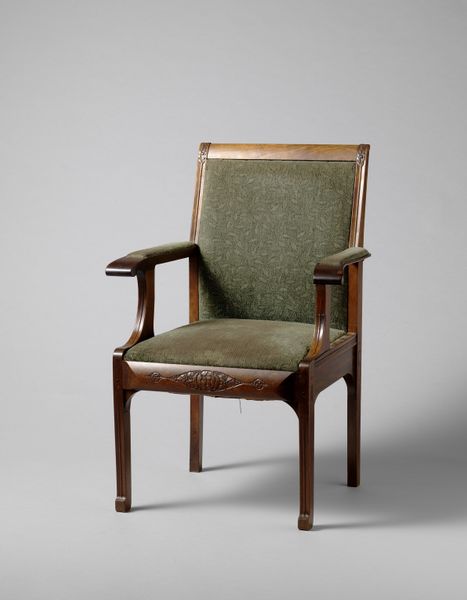
textile, wood
#
art-deco
#
furniture
#
textile
#
wood
Dimensions: height 72.5 cm, width 68.0 cm, depth 72.5 cm, weight 34 kg
Copyright: Rijks Museum: Open Domain
Curator: Here we have "Armstoel, ontwerp Jan de Meijer," or armchair designed by Jan de Meijer, dating from between 1925 and 1929. The materials are listed as wood and textile. Editor: The immediate impression is one of reserved elegance, a study in muted tones and solid, geometric form. It looks quite sturdy, maybe a little worn, almost begging for a patron to sink into it. Curator: Notice the use of unadorned planes juxtaposed with the stylized carved details on the armrests. These decorative motifs reflect the broader Art Deco movement, known for its geometric shapes, rich materials and often the blending of modern and classical elements. Editor: Art Deco, although visually striking, served a very specific societal stratum emerging from post-WWI Europe, primarily catering to elite tastes as countries were rebuilt from global conflict and financial devastation. Did de Meijer intend for the Armstoel to signify that aspirational luxury? How would it be received by people during the Great Depression which began the year the Armstoel was designed? Curator: It's worth noting that the upholstery contributes significantly to the overall aesthetic. The subtle variations in the textile’s color and texture soften the rigidity of the wooden frame, lending it a degree of comfort and tactility that aligns well with Art Deco ideals of luxury. Editor: True, but I also think about labor, class, the economics of material production and what life would have been for the person whose hands wove that textile... Was this artisan's work credited, appreciated, or were they one of the nameless many whose creativity subsidized design for wealthier people? Curator: Your points resonate, of course, directing our considerations outside formal elements, toward that bigger, essential, socioeconomic frame. Ultimately the armchair can be seen as a design object that embodies and exposes historical circumstances far beyond itself. Editor: Right, objects such as these—with the embedded nuances of status and class that may seem "classic"—demand scrutiny to inform current design practices of accessibility, and material sustainability. Curator: Yes, indeed, and even now as a piece to observe aesthetically.
Comments
No comments
Be the first to comment and join the conversation on the ultimate creative platform.
